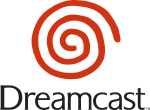Sixth generation of video game consoles facts for kids
The sixth generation of video games was an exciting time for gaming, starting in 1998 and lasting until 2015. During this period, four main home consoles battled it out: the Sega Dreamcast, Sony PlayStation 2 (PS2), Nintendo GameCube, and Microsoft Xbox. Handheld gaming also grew with devices like the Game Boy Advance. This era brought big changes, especially with games connecting to the internet and consoles using internal hard disk drives to store game data.
The Dreamcast was the first console of this generation, launching in Japan on November 27, 1998. The PlayStation 2 followed on March 4, 2000, then the GameCube on September 14, 2001, and the Xbox on November 15, 2001. The Dreamcast was stopped first in 2001, followed by the Xbox in 2006, GameCube in 2007, and the PlayStation 2 was the last to be discontinued in January 2013. The next generation of consoles began in November 2005 with the Xbox 360.
A huge change in this generation was the ability to play games online. While some older systems had internet, they weren't very popular. Services like Microsoft's Xbox Live became super important, letting players connect and play together over the internet. Another cool new feature was the Xbox being the first console with a built-in hard disk drive. This meant games could load faster and players could download games directly, instead of always needing a physical disc. Other systems soon added similar features, and internal storage became a standard for future consoles.
The idea of "bits" (like "64-bit" or "128-bit") to describe how powerful a console was became less important in this era. While the Dreamcast and PS2 were advertised as "128-bit," the number of bits mostly referred to the CPU's word size. After a certain point, other things like processor speed, data speed, and memory size became more important for how well a console performed.
For handhelds, the Bandai's WonderSwan came out in Japan in 1999. But Nintendo kept its lead with the Game Boy Advance, released in 2001. It had many improvements over the original Game Boy. The Game Boy Advance was stopped in early 2010, and the next handheld generation started in November 2004 with the Nintendo DS.
The very last official Dreamcast games came out in 2007 in Japan. The last GameCube games were released in 2007, and the last Xbox games in 2008. The PlayStation 2 had games released until November 2013 in Europe (Pro Evolution Soccer 2014) and May 2015 in Japan (Final Fantasy XI: Rhapsodies of Vana'diel), marking the end of this generation.
Contents
Home Consoles of the Sixth Generation

The Sony PlayStation 2 was the clear winner in sales during this generation. It sold over 150 million units, making it the best-selling console in history! The Microsoft Xbox sold over 24 million units, and the GameCube sold 22 million units. The Sega Dreamcast, which came out first and was stopped early in 2001, sold 9.13 million units.
This generation started to wind down when the Xbox was replaced by the Xbox 360 in late 2005. The GameCube was still being made when the Wii came out in late 2006, but its production stopped in 2008. The PlayStation 2 continued to sell well until 2010 because it had so many games, still received support, and was affordable.
Even in February 2008, the PlayStation 2 sold more units in the United States than both the PlayStation 3 and Xbox 360. Games were still being made for the PlayStation 2, Xbox, and GameCube in 2008. The PlayStation 2 was even still being made after the Wii U launched in 2012, making the sixth generation one of the longest in gaming history.
Sega Dreamcast: The First to Arrive
The Sega Dreamcast was the first console of this generation. It had some cool features that made it stand out, like built-in internet gaming with a modem and a web browser.
The Dreamcast helped improve Sega's reputation after some earlier consoles like the Sega Saturn didn't do so well. However, the Dreamcast was stopped early for a few reasons. The upcoming and highly anticipated PlayStation 2 slowed down Dreamcast sales. Many people waited for the PS2 because it had a built-in DVD player and could play older PlayStation games. Also, some gamers and game makers were unsure about Sega's long-term support for its consoles.
Sega used a special disc format called GD-ROM, which saved money but wasn't as good as the PS2's DVD capabilities. Sega also couldn't spend as much money on advertising as Sony. With the Xbox and GameCube announced in late 2000, some felt the Dreamcast was already old after only two years. Because of past losses and new competition, Sega decided to stop making the Dreamcast in early 2001 and left the console market entirely. Sega then became a company that only makes games for other consoles.
Sony PlayStation 2: The Best Seller
The strong name Sony built with the first PlayStation was a big reason for the PlayStation 2's huge success. This helped it get many players and attract game developers. The PlayStation 2 could also play DVDs and was able to play games from the original PlayStation, which many believe boosted its sales. Sony also made sure to get popular games like Final Fantasy X, Grand Theft Auto III, and Metal Gear Solid 2: Sons of Liberty for the PS2. This helped it outsell its rivals right from the start. The PS2 became the top-selling console of this generation, while the Xbox and GameCube were also successful, but not as much.
Nintendo GameCube: A Family Favorite
Nintendo faced a challenge with its image, as it was known for being very family-friendly. While its popular game series and long history gave it loyal fans, it struggled against the Xbox and PlayStation 2, which had more "Mature" rated games. Nintendo also didn't focus much on online gaming, releasing only a few online games like Phantasy Star Online Episode I and II. Instead, Nintendo focused on connecting the GameCube with the Game Boy Advance.
As a result, the GameCube didn't sell as much as its older brother, the Nintendo 64, but it wasn't a financial failure. Nintendo did improve its relationships with many game developers, working closely with them to make games based on its popular series. This was different from the past, where Nintendo was sometimes seen as difficult to work with. Because of this, the GameCube had more games made by Nintendo itself or by companies working closely with Nintendo, while its rivals mostly relied on games from other companies.
Microsoft Xbox: A Strong Newcomer
Even though the Xbox had the huge financial support of Microsoft, it couldn't beat the PlayStation 2's lead. However, the Xbox gained a large group of fans and strong support from game developers in the United States and Europe. It became a well-known brand. The Xbox Live online service was very successful, which encouraged Sony to improve the PlayStation 2's online features. Xbox Live also gave the Xbox an advantage over the GameCube, which had almost no online games. The most famous game on Xbox Live was Halo 2, which sold over 8 million copies worldwide. However, the Xbox struggled to become popular in Japan, partly because Microsoft wasn't as well-known there and didn't fully understand Japanese culture.
Comparing the Home Consoles
| Name | Dreamcast | PlayStation 2 | GameCube | Xbox |
|---|---|---|---|---|
| Logo | ||||
| Manufacturer | Sega | Sony (SCE) | Nintendo | Microsoft |
| Image(s) |  |
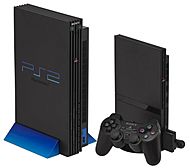 |
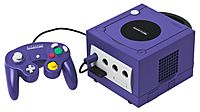 |
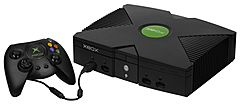 |
| An NTSC-U Dreamcast console, controller and VMU. On PAL consoles, the Dreamcast swirl was blue/green (au), and on NTSC-J it was red, but on games the swirl was orange. | Left: An original model PlayStation 2 Right: A slimline PlayStation 2 with DualShock 2 controller and memory card. |
An indigo GameCube and controller | An Xbox console and controller | |
| Launch prices | US$199.99 (equivalent to $351.32 in 2022) £199.99 (equivalent to £249.76 in 2021) DEM499.99 (Equivalent to €255.64 in 1999, and to €367.51 in 2020) |
US$299.99 (equivalent to $509.78 in 2022) £299.99 (equivalent to £374.65 in 2021) DEM869.99 (Equivalent to €444.31 in 2000, and to €625.98 in 2020) |
US$199.99 (equivalent to $330.52 in 2022) £129.99 (equivalent to £152.4 in 2021) €199.99 |
US$299.99 (equivalent to $495.79 in 2022) £299.99 (equivalent to £351.72 in 2021) €479.99 (Changed to €399.99 shortly before Launch) |
| Best-selling game | Sonic Adventure, 2.5 million (as of June 2006) | Grand Theft Auto: San Andreas, 20.81 million (as of August 24, 2013) | Super Smash Bros. Melee, 7.5 million (as of August 24, 2013) | Halo 2, 8.49 million (as of August 24, 2013) |
| Release date |
|
|
|
|
| Discontinued |
|
|
Q3 2007 |
|
| Accessories (retail) |
|
|
||
| CPU | 200 MHz SuperH SH-4 | 294 MHz MIPS "Emotion Engine" 299 MHz later models | 485 MHz PowerPC "Gekko" | 733 MHz x86 Intel Celeron/Pentium III Custom Hybrid |
| GPU | 100 MHz NEC/VideoLogic PowerVR CLX2 "Holly" | 147 MHz "Graphics Synthesizer" | 162 MHz ATI "Flipper" | 233 MHz Custom Nvidia NV2A |
| RAM | Main RAM 16 MB SDRAM Video RAM 8 MB Sound RAM 2 MB |
Main RAM 32 MB dual-channel, RDRAM Video RAM 4 MB eDRAM Sound RAM 2 MB |
Main RAM 24 MB 1T-SRAM, Video RAM 16 MB DRAM 3 MB embedded 1T-SRAM |
64 MB unified DDR SDRAM |
| Audio | Stereo audio, with: | 5.1 Surround sound audio, with:
|
Stereo audio, with:
|
5.1 Surround sound audio, with:
|
| Optical media | GD-ROM, CD | DVD, CD | GameCube Game Disc, DVD (Panasonic Q) | DVD, CD |
| Video outputs | VGA (RGBHV), SCART (RGBS), S-Video, composite | Component (YPBPR, RGsB), VGA (RGsB; progressive scan games/PS2 Linux only), SCART (RGBS), S-Video, composite | Component (YCBCR), SCART (RGBS; PAL consoles only), S-Video (NTSC consoles only), composite | Component (YPBPR), SCART (RGBS), S-Video, composite |
| Online service | JP: Dricas (1998-2007) NA: Sega Net (2000–2002) EU: Dreamarena (2000–2003) |
Non-unified services (2002–2016) | Non-unified services (2003–2009) | Xbox Live (2002–2010) |
| Backward compatibility | None | PlayStation | Game Boy family (Game Boy Player required) |
None |
| System software | Proprietary OS | Proprietary OS, PS2 Linux | Proprietary OS | Proprietary OS |
How Many Consoles Were Sold?
| Console | Units sold |
|---|---|
| PlayStation 2 | 155 million (as of March 31, 2012) |
| Xbox | 24 million (as of May 10, 2006) |
| GameCube | 21.74 million (as of September 30, 2010) |
| Dreamcast | 9.13 million (as of September 6, 2002) |
Other Home Consoles You Might Not Know
These consoles were also made for the general public, but they weren't as well-known or didn't sell as many units as the main four. Some were only released in certain parts of the world.
-
Panasonic Q, a version of the GameCube that also played DVDs. It was released by Panasonic in 2001.
The Panasonic M2 was a sixth-generation console that was developed but never released to the public. The V.Smile was an educational gaming system created by VTech and released in 2004.
Understanding Console Power: Beyond "Bits"
After the previous generation (32-bit/64-bit), the idea of "bits" in console names became less important. The number of "bits" used to refer to the CPU's word size. However, increasing this number beyond 32 bits didn't always make a console much more powerful. Other things like the speed of the CPU and graphics processing unit, how much data could be moved around, and the size and speed of memory became more important.
Console makers used to talk a lot about "n-bit" to make their systems sound more powerful. The Dreamcast and PlayStation 2 were the last systems to use "128-bit" in their advertising. Today, it's hard to compare the "power" of different systems just by looking at their CPU word size or clock speed. Performance depends on many different parts working together.
The Microsoft Xbox used a 32-bit CPU that was similar to a computer's Celeron/Pentium III chip. It had 64 MB of shared RAM and ran at 733 MHz. Its graphics chip, called NV2A, was like a desktop graphics card and was the only console at the time with special features called vertex and pixel shaders.
The GameCube's IBM Gekko PowerPC CPU ran at 485 MHz. Its "Flipper" graphics processor was similar to an ATI Radeon. It had 43 MB of memory that was not shared between different parts. The GameCube also supported Dolby Pro Logic II sound.
The PlayStation 2's CPU, called the "128-bit Emotion Engine", had a 64-bit core. It also had two 128-bit Vector Units. The PS2's unique setup with many processing units was tricky for game developers at first. The PS2's Graphics Synthesizer (GS) had fast video memory, but it was limited in how much data it could hold. Because the main memory was only 32MB, many PS2 games had simpler textures compared to versions on other consoles. However, the PS2's design was very flexible, allowing developers to use its different parts in creative ways.
The Dreamcast had a 64-bit SuperH-4 RISC CPU running at 200 MHz. Its PowerVR 2DC CLX2 graphics chip used a special way of drawing 3D scenes called Tile Based Deferred Rendering (TBDR). This method helped the Dreamcast create detailed images by breaking the screen into small sections and drawing them one by one.
Handheld Gaming Systems
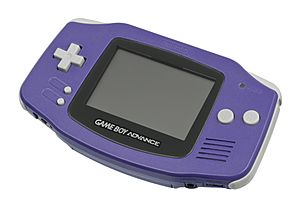
During the sixth generation, many new handheld gaming devices came out. Nintendo stayed in charge of the handheld market with the Game Boy Advance, released in 2001. It was a big upgrade from the original Game Boy. Two newer versions, the Game Boy Advance SP (2003) and the Game Boy Micro (2005), followed. The Bandai's WonderSwan also launched in Japan in 1999. In 2001, the South Korean company Game Park released its GP32 handheld, which was one of the first "open source" handheld consoles, meaning people could create their own programs for it. The Game Boy Advance family of handhelds sold 81.51 million units worldwide.
A new trend in this market was for companies to add many "non-gaming" features to their handhelds, like being a cell phone, MP3 player, movie player, or PDA. The Nokia's N-Gage, released in 2003, was one of the first to do this, working mainly as a mobile phone. It was updated in 2004 and called the N-Gage QD. Another handheld, the Zodiac from Tapwave, came out in 2004. It was based on the Palm OS and had special video and sound features for gaming.
The vtech V.SMILE Pocket was a less common handheld of this generation, which was a portable version of their V.SMILE home console.
As PDAs became more common in the previous generation, the line between regular electronics and computers started to blur. PDAs were sometimes called "the computers of handheld gaming" because they could do many things and had powerful computer parts. However, PDAs were still mostly for business people and didn't have many new, affordable games to compete with dedicated gaming handhelds.
Comparing Handhelds
| Name | WonderSwan | Game Boy Advance / Game Boy Advance SP / Game Boy Micro | N-Gage / N-Gage QD |
|---|---|---|---|
| Manufacturer | Bandai | Nintendo | Nokia |
| Console |    |
 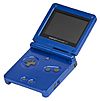  |
  |
| Release dates | WonderSwan:
WonderSwan Color:
SwanCrystal:
|
Game Boy Advance:
Game Boy Advance SP:
Game Boy Micro:
|
N-Gage: October 7, 2003 N-Gage QD: May 26, 2004 |
| Discontinued | 2003 | 2007 | 2006 |
| Logo | |||
| Launch prices | WonderSwan:
WonderSwan Color:
SwanCrystal: Japan: ¥7,800 |
GBA:
GBA SP:
GB Micro:
|
N-Gage:
N-Gage QD:
|
| Media | WonderSwan cartridge | Game Boy Advance Game Pak | MultiMediaCard (MMC) |
| Best-selling game | Final Fantasy | Pokémon Ruby and Sapphire, 16.22 million combined (as of November 25, 2004) | ? |
| Accessories (retail) |
|
||
| OS | Symbian S60 | ||
| CPU | 16-bit, NEC V30 MZ | 16.8 MHz, 32-bit, ARM7TDMI with embedded memory | 104 MHz, 32-bit, RISC based on ARM9 series |
| Memory | 512 kbit (64 KB) RAM | 32 kilobyte + 96 kilobyte VRAM (internal to the CPU), 256 kilobyte WRAM (outside the CPU) | 16 megabyte RAM, 16 megabyte ROM (3.4 MB accessible for storage) |
| Audio | 4-bit PCM channels | Stereo audio, with:
|
Stereo audio (using headphones), with:
|
| Interface |
|
|
|
| Dimensions | WonderSwan Color: 12.8 × 24.5 × 82mm (5.04 in × 2.93 in × 0.96 in) | GBA: 144.5 × 24.5 × 82 mm (5.69 × 0.96 × 3.2 inches) GBA SP: 84 × 82 × 24.4 mm (3.3 × 3.23 × 0.96 inches) GB Micro: 50 × 101 × 17.2 mm (2 × 4 × 0.7 inches) |
N-Gage QD: 70 mm (2.8 in) (h) 134 mm (5.3 in) (w) 20 mm (0.79 in) (d) N-Gage QD: 118 mm (4.6 in) (w) 68 mm (2.7 in) (h) 22 mm (0.87 in) (d) |
| Weight | WonderSwan Color: 96 g (3.4 oz) | GBA: 140 g (4.9 oz) GBA SP: 142 g (5.0 oz) GB Micro: 80 g (2.8 oz) |
N-Gage: 137 g (4.8 oz) N-Gage QD 143 g (5.0 oz) |
| Online service | N-Gage Arena | ||
| Backward compatibility | N/A | Game Boy, Game Boy Color (GBA, GBA SP only) | N/A |
| Resolutions | 224 x 144 | 240 × 160 | 176 × 208 |
| Storage | 3.4 MB internal storage, MMC | ||
| Battery life | WonderSwan: 40 hours
WonderSwan Color: 15 hours |
GBA: 15 hours GBA SP: 10 hours continuous play with light on, 18 hours with light off GB Micro: 5 hours with top brightness and sound, 8 hours with both features on default |
|
| Units sold (all models combined) | Japan: 3.5 million (combined)
WonderSwan: 1.55 million WonderSwan Color: 1.1 million |
Worldwide: 81.51 million (as of September 30, 2010) Japan: 16.96 million |
Worldwide: 3 million (as of July 30, 2007) |
Note: First year of release is the first year of the system's worldwide availability.
Other Handhelds You Might Not Know
-
Leapster Learning Game System (2003) An educational handheld for younger kids.
Handheld Sales Figures
| Console | Units sold |
|---|---|
| Game Boy Advance (figure includes GBA SP and Game Boy Micro) |
81.51 million |
| N-Gage | 3 million |
| Tapwave Zodiac | less than 200,000 units |
| GP32 | 30,000 |
Big Changes and Trends in Gaming
Games Becoming More Alike
During this generation, major game companies like Activision, Electronic Arts, and Ubisoft started releasing their games on many different platforms. This meant you could often find the same game on PC, all major consoles, and sometimes even handhelds. The sixth generation was the first time console and computer games became very similar. They even started to offer better features and graphics than arcade games. The Dreamcast, which had tools to help move PC games to it, and the Xbox, which was built with many standard PC parts, both helped this trend.
Playing Old Games: Emulation and Retro Gaming
Because consoles became more powerful, and special programs called emulators became popular, playing older games (called retro gaming) became a big thing. Many classic games were updated with better graphics or sound and re-released for the new consoles. You could often play games from the Nintendo Entertainment System, Super Nintendo Entertainment System, Mega Drive/Genesis, PlayStation, and Nintendo 64 using emulators.
Handheld consoles also became powerful enough to play older games. Nintendo released many NES and SNES games for its Game Boy Advance. Many game developers also released collections of their old games. Plus, many games and series that were only available in Japan before were released in North America and Europe for the first time.
The Rise of Online Gaming
Online gaming, which used to be mostly for PC games, became much more important for consoles in this generation. The Dreamcast started this trend with its built-in modem and online games. The PlayStation 2, Xbox, and GameCube also offered online gaming, but in different ways.
The Xbox had a special service called Xbox Live that cost money each year. It worked best with a fast internet connection. Xbox Live's ability to connect players for online multiplayer games was a big reason why the Xbox became popular, especially for first-person shooter games. The PlayStation 2 let each game publisher handle its own online service. It was free, but the experience could vary. The SOCOM series was very popular for online play on the PS2. The GameCube didn't offer online play for most of its own games. Only a few games, like Sega's Phantasy Star Online series, used the console's online features. Also, you needed an extra adapter to connect the GameCube to the internet.
Big Companies Joining Forces
Many game publishing companies with long histories merged with their rivals during this time:
- Microsoft bought game developer Rare in 2002.
- Square joined with Enix to form Square Enix in 2003.
- Sega merged with Sammy to create Sega Sammy Holdings in 2004.
- Konami bought a large part of Hudson Soft.
- Namco merged with Bandai to form Bandai Namco Holdings in 2006.
Amazing Games of the Sixth Generation
Important Games That Made a Mark
- Dead or Alive 2 (Dreamcast, PS2) was praised as one of the best fighting games ever. It was known for improving levels that had multiple areas. Dead or Alive 3 (Xbox) sold over 2 million copies and built on the success of the previous game.
- Final Fantasy X (PS2) changed many things from older games in the series, adding a new battle system. It sold over 1.4 million copies in Japan before it even officially came out, setting a record for how fast a role-playing game could sell.
- Forza Motorsport (Xbox) was highly praised and set a new standard for racing games.
- God of War and God of War II (PS2) were both loved by critics for their gameplay, graphics, and story.
- Grand Theft Auto III, Vice City, and Grand Theft Auto: San Andreas (PS2, Xbox, PC) made "sandbox" style gameplay popular. In these games, players could explore a big city and do missions in any order they liked. Many games have copied this style since.
- Half-Life 2 (PC, Xbox) was praised for its amazing physics, animations, sound, and graphics. It was even named Game of the Decade!
- Halo: Combat Evolved (Xbox, PC) was the most successful game when the Xbox first launched. Halo 2 broke records for how fast it made money and was very popular on Xbox Live.
- Jet Set Radio (Dreamcast) was loved for its arcade-style gameplay, fast music, and unique cel-shaded graphics (which made it look like a cartoon). It helped make cel-shaded graphics popular in video games. Jet Set Radio Future (Xbox) improved on the original game.
- The Legend of Zelda: The Wind Waker (GameCube) is still considered one of the best games of this generation. Critics loved its colorful art style and fun gameplay. It even got a perfect score from a famous Japanese game reviewer, Famitsu. The Legend of Zelda: Twilight Princess (GameCube) was another important game in the series, known for its exciting announcement trailer and its huge world.
- Metal Gear Solid 2: Sons of Liberty (PS2, Xbox, PC) and Metal Gear Solid 3: Snake Eater (PS2) improved the stealth game genre. They added many new abilities and made the game environments almost completely interactive.
- Metroid Prime (GameCube) is one of the highest-rated games of this generation. It sold over a million copies in North America alone and won many "Game of the Year" awards. Many critics and gamers think it's one of the greatest video games ever made.
- NFL 2K1 (Dreamcast) was the first football game to let players compete online.
- Phantasy Star Online (Dreamcast, GameCube, Xbox, PC) was the first online role-playing game (MMORPG) for consoles. It was a groundbreaking game that influenced many others.
- Pokémon Ruby and Sapphire (Game Boy Advance) added many new features to the Pokémon series. They became the best-selling games for the Game Boy Advance, selling over 16.22 million copies worldwide.
- Resident Evil 4 (GameCube, PS2, PC) changed the series to be more action-focused. It's still one of the highest-rated games of the generation.
- Rez (Dreamcast, PS2) was highly praised and is seen as an example of video games as art.
- Shadow of the Colossus (PS2) is often called an example of video games as art. Its music was especially loved by critics.
- Shenmue (Dreamcast) was a big step forward for 3D open-world games. It also introduced the modern "quick time event" (QTE) where players quickly press buttons during cutscenes. It's considered one of the most influential games ever.
- Sonic Adventure (Dreamcast, GameCube, PC) was the first main Sonic the Hedgehog game to feature 3D gameplay. It received perfect scores from some reviewers, who called it one of the greatest games of all time.
- Soulcalibur (Arcade, Dreamcast) was the first fighting game to get a perfect 10.0 rating from IGN and GameSpot, and a perfect score from the Japanese magazine Famitsu. Soul Calibur II (Arcade, PS2, GameCube, Xbox) was a bestseller and featured special characters for each console version.
- Star Wars: Knights of the Old Republic (PC, Xbox) is considered one of the best games of the generation and one of the greatest games ever.
- Super Mario Sunshine (GameCube) is the highest-rated 3D platformer of the generation. It was the first 3D Mario game where you could ride Yoshi.
- Super Smash Bros. Melee (GameCube) became one of the most popular games on the GameCube and is still played in many competitive tournaments.
- Tekken Tag Tournament (PS2) was a launch title for the PlayStation 2 and is considered one of the best PS2 games and a very important game in the Tekken series. It was a popular fighting game for tournaments during this generation.
- Virtua Fighter 4 (Arcade, PS2) was highly praised and set a new standard for 3D fighting games. It sold over 1.5 million copies worldwide on the PS2.
See also
 In Spanish: Videoconsolas de sexta generación para niños
In Spanish: Videoconsolas de sexta generación para niños
- 1990s in video games
- 2000s in video games
- Seventh generation of video game consoles
- Fifth generation of video game consoles


